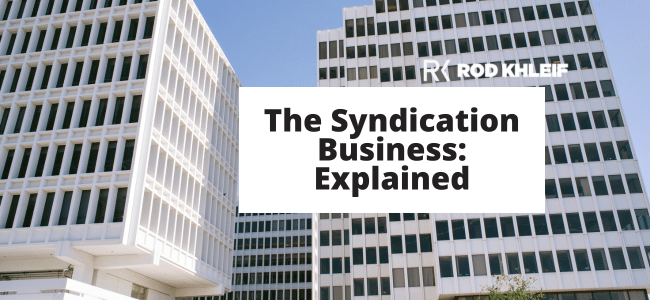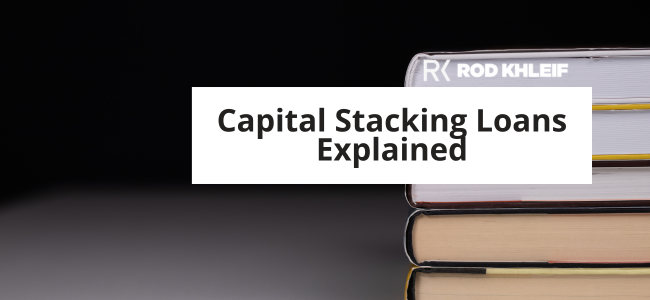What You Should Know About Prepayment Penalties
Nearly every multifamily transaction is financed with some combination of debt and equity. In most cases, the debt comes from a commercial lender and the loan has a specific loan term, usually somewhere in the five to twenty five year range. When the lender makes the loan, they do so expecting to earn a certain amount of interest income over the term. But, things don’t always go according to plan and there are times where the borrower will pay off their loan early. When this happens, they may be charged a prepayment penalty because the lender will earn less income than originally expected.
In this article, we are going to describe what a prepayment penalty is, common methods for calculating them, and why they may actually be a good thing under certain circumstances. By the end, readers will have the information needed to understand the importance of the prepayment penalty clause in a loan negotiation.
Let’s start with a definition.
What is a Prepayment Penalty?
A prepayment penalty is exactly what it sounds like. It is a fee charged by a lender for paying off a loan balance earlier than the end of the loan term.
For example, suppose a borrower took out a five year, adjustable rate, commercial mortgage loan to finance the acquisition of a 50-unit multifamily property. But, two years into the loan’s term, interest rates have fallen significantly and the borrower would stand to save $1,250 on their monthly payments by refinancing to a new loan with a lower, fixed interest rate. In such a case, they would use the new loan’s proceeds to pay off the old loan earlier than the end of its five year term.
On its face, this may seem like a no-brainer decision, and it may be, but it all depends on the type and amount of the prepayment penalty charged by the lender.
Why Do Lenders Charge Prepayment Penalties?
The specific reason for a prepayment penalty can vary based on the type of loan. But, the general reason is that a lender expects to earn a certain amount of interest income every time they make a loan. They base their estimate of interest income, in part, on the term of the loan. So, when the loan is paid off early, they will earn less income than they originally anticipated. To offset this loss, they charge a prepayment penalty.
Types of Prepayment Penalties
In general, there are three types of prepayment penalties that a lender could potentially charge. The choice depends mostly on the loan type, loan amount, and loan term. Each type is described in detail below.
Hard and Soft Prepayment Penalties
The designation of a hard or soft prepayment penalty depends on whether or not the lender allows the borrower to sell their property without paying a prepayment penalty.
A soft prepayment penalty does allow a borrower to sell their property and use the proceeds to pay off the loan without a prepayment penalty. This type of flexibility allows borrowers to take advantage of favorable market conditions without the worry of a big fee from the lender.
A hard prepayment penalty is not as forgiving. It is charged when the loan is paid off early, regardless of if the payment comes from a sale or refinance.
Depending on the specifics of the loan agreement, there are three ways that a hard or soft prepayment penalty could be calculated:
- Fixed Amount: This is a lump sum prepayment penalty. For example, the loan agreement could state that the prepayment penalty is a flat $5,000.
- Percentage of Loan Balance: More likely, the prepayment penalty is calculated as a percentage of the remaining balance on the loan, which is likely to decline over time. For example, in a five year loan term, the prepayment penalty costs could be 5% in year one, 4% in year two, 3% in year three and so on.
- Percentage of Interest: Finally, the prepayment penalty could be calculated as a percentage of interest to be paid. For example, it could be 75% of 12 months of interest due. This would be an extreme penalty, but it is just suggested as an example of how this type of prepayment penalty would be calculated.
In some ways, this is the simplest way to calculate a prepayment penalty. The other two options are more complex.
Defeasance
In a multifamily loan that was originated by a conduit lender and sold into the CMBS market, defeasance is the likely prepayment penalty fee option. The logic behind this option is complex and outside the scope of this article, but there is one important point to know. CMBS is an acronym for commercial mortgage backed securities (bonds), which are investment vehicles purchased by individuals and institutions for their steady stream of interest payments. A CMBS loan may be sliced into many pieces and sold to many different investors, which means that it can be incredibly difficult to negotiate a prepayment penalty by getting them all to agree on one.
Instead, defeasance allows a borrower to replace their loan with a basket of securities (usually US Treasuries) that pays the same amount of interest that investors would have earned had the loan gone its full term. In many cases, this works out to be a good deal for CMBS holders because US Treasuries tend to be much less risky than a multifamily backed loan, yet they still earn the same amount of interest. However, for borrowers, this can be incredibly expensive, particularly if the loan is early in its term.
Yield Maintenance
The third option is known as yield maintenance and it is similar to defeasance in the sense that it allows the lender to achieve the same yield as they would have had the borrower made all of their scheduled mortgage payments.
The calculation of the yield maintenance can be complex, but it is the difference between the amount of money the lender would have made from all of the remaining interest payments and the amount of money they could make if they reinvested the principal balance of the loan, usually in US Treasuries. For example, if a loan has a $1,000,000 principal balance and three years left in its term, the yield maintenance prepayment penalty would be the difference between the interest the lender would have earned in the remaining three years and the interest they would earn if they invested the $1,000,000 remaining balance in US Treasuries over those same three years. The specific of the calculation are outlined in the loan documents and can vary by deal.
Why Would a Borrower Pay a Prepayment Penalty?
Although they can be very expensive, a borrower may be happy to pay a prepayment penalty in two situations.
First, they could have an opportunity to sell their property at a significant profit. In this case, the profit would be slightly reduced, but it makes paying the prepayment penalty worth it.
Second, the borrower could have an opportunity to save a significant amount of money on interest payments by refinancing the loan. In this case, the amount of the savings has to be enough to justify the cost of the mortgage prepayment penalty.
Summary & Conclusion
Prepayment penalties are fees charged by commercial mortgage lenders when a borrower pays their loan off prior to the end of the agreed upon term. Not all loans contain them, but they are common with many multifamily real estate loans. The terms of the prepayment penalty may be negotiable, but they are usually outlined in the fine print of the loan documents / loan agreement.
There are three types of prepayment penalties in multifamily loans, hard/soft penalties, yield maintenance, and defeasance. The type is closely correlated with the loan type and the details are outlined in the loan documents.
Despite their cost, there are scenarios where prepayment penalties may be worth it. Particularly if the borrower stands to make a big profit on a sale or can achieve big savings through reduced monthly interest.












